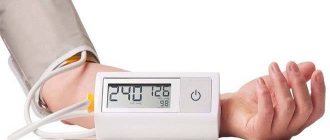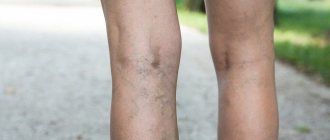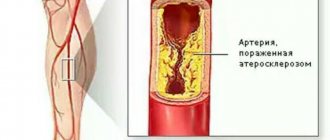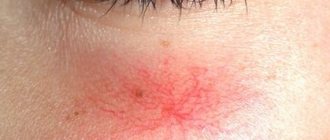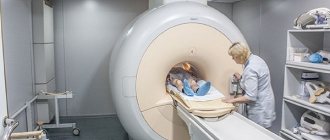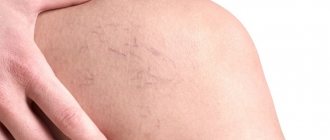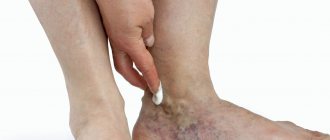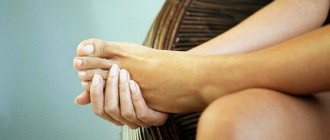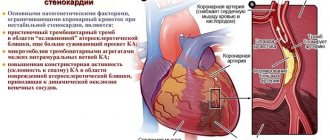What it is?
A session of sclerotherapy for the veins of the lower extremities involves the introduction of a special substance into the cavity of the vessel, after which its tissue is replaced by denser connective fibers. This leads to narrowing and then complete gluing of the lumen of the vein.
Initially, acid-based sclerotherapy drugs were used. However, in addition to the desired effect, many complications were also noted, which did not allow the further use of such a composition. In the 50s of the twentieth century, a significant discovery took place in the field of phlebology - a high-quality sclerosant, tetracedyl sulfate, was invented, which is still used by doctors. Since then, only the methods of administering the substance have changed and the equipment has been improved.
Indications for the procedure
Not only varicose veins can be eliminated with sclerotherapy. This method treats pathologies of blood vessels of the circulatory and lymphatic systems. The indications include the following:
- small hemangiomas;
- lymphangiomas;
- varicose veins of the leg;
- visual skin defects in the form of telangiectasia, spider veins;
- addition of surgical and conservative treatment to enhance the effect.
The most common indication for sclerotherapy is the initial degree of varicose veins, which is manifested by the appearance of spider veins, which in turn indicates the presence of damage to superficial small capillaries. Adequate treatment with drugs, compression and the use of sclerotherapy can completely relieve the patient of the disease.
What drugs are used
As mentioned earlier, acids were initially used to treat varicose veins using the method of “gluing” veins together. Nowadays sclerosants are used that are inert to the blood environment. Recommended dosages have virtually no negative effects on the human body. Among the most popular drugs it is worth noting:
- 0.5% solution of polydacanol, or Ethoxysklerol: has a weak sclerosing effect, but also a minimal risk of side effects. Suitable for the treatment of spider veins and minor varicose veins;
- Fiberwein is a highly active drug that is widely used in European countries. However, in addition to the obvious therapeutic effect, it causes a number of complications in the form of skin necrosis and changes in its color;
- Thrombovar is a remedy that remains in the history of sclerotherapy. It was considered one of the most effective, but at the same time dangerous to human health, medications.
According to the mechanism of action, all sclerosants are divided into detergents, osmotic solutions and corrosive agents. The first are considered the safest: in a split second they destroy the proteins of the inner layer of the vessel, thereby provoking its narrowing.
Osmotic solutions have a more complex mechanism. They cause damage to the inner layer of veins only after some time. To do this, the medicine must remain in the cavity of the vessel for a long period, which significantly complicates the procedure.
The main active ingredients of sclerosants of the corrosion mechanism are iodine and chromium compounds. After introducing the drug into the vein, not only the endothelial layer, but also the muscle layer of the vascular wall that follows it is destroyed - the effect of the drug is so aggressive.
The choice of product is made based on its availability, properties, quality, as well as the individual preferences of the specialist. Moreover, only a doctor can answer questions about the distinctive features of each medicine.
About the advantages and disadvantages of the method
Like all therapeutic methods, sclerotherapy of the veins of the lower extremities has a number of advantages and disadvantages. The following positive qualities should be highlighted:
- low invasiveness, no traces of intervention;
- minimal risk of side effects;
- no need for hospitalization;
- short-term rehabilitation period;
- availability of the method;
- painlessness;
- no need to administer anesthesia.
Disadvantages include:
- lack of effectiveness;
- frequent need for repeated sessions;
- narrow range of indications;
- the need to change lifestyle after the procedure;
- inability to discontinue medications or wear compression garments.
In any case, the choice of treatment method for varicose veins, including sclerotherapy, is made by the attending physician, depending on the individual characteristics of the patient.
Benefits of this treatment
Based on reviews of sclerotherapy of leg veins, we can conclude that this therapy is chosen solely because it has certain advantages over others. Some doctors are in no hurry to give advice on treatment, but the choice falls on scleroplasty for the following reasons:
- There are no traces after the procedure.
- The vessels are not affected, but only stick together.
- There is no effect on the general condition of the body.
- The method is favorable in the presence of thrombophlebitis, periphlebitis.
- This option is optimal for preventing recurrent varicose veins. That is, the veins were healed, thinned, but the number increased.
- The technique is ideally combined with laser therapy; if the disease is very widespread and the vessels are large, sclerotherapy and other techniques are used together.
As a rule, such treatment is quite effective and has a number of other positive aspects. However, the main thing in this therapy is to adhere to the recommendations and advice of doctors.
Types of procedures
Depending on the materials used, as well as the method of administering the substance, sclerotherapy of the veins of the lower extremities is divided into several types:
1. Microfoam, or Foam-form sclerotherapy. A distinctive feature of this method is the form of the drug administered during the procedure. The product has the form of a fine-celled foam, while containing a significant amount of medication.
At the same time, the risk of side effects is minimal. Moreover, the foam is clearly visible on the ultrasound machine, and therefore the introduction of sclerosant can be controlled. Due to the fact that the foam has a larger volume than just a dissolved product, less of it will be needed to treat one vein.
2. Microsclerotherapy (used to eliminate aesthetic imperfections of the skin). The method of action is to inject medicinal solutions into the smallest veins with the thinnest needles (3 mm in diameter). In one session, the doctor performs up to 7 injections directly into the area of the vascular network.
Foam-form sclerotherapy
The essence of the Foam-form technique is that the sclerosant preparation is brought into a fine foam-like state before administration. In this form, it ensures closer interaction of the active component with the vein wall.
To prepare such a foam-like sclerosant, the liquid preparation is mixed with sterile carbon dioxide and air. The resulting solution acts more effectively on large varicose veins and can be used to remove both large and medium-sized (5-10 mm in diameter) vessels, as well as small ones (2-3 mm). Such finely dispersed mixtures of sclerosants can be used to perform echosclerotherapy or microsclerotherapy.
Patient preparation, administration technique and post-procedure rehabilitation remain the same as for standard procedures. In addition to greater efficiency, the Foam-form technique allows the use of a smaller dose of sclerosing agent and reduces patient costs.
Necessary preparatory steps
Before sclerotherapy, a number of laboratory and instrumental tests are performed. Only after a doctor has made an accurate diagnosis and determined the extent of the disease can one or another type of vein sclerosis be prescribed.
The doctor informs the patient for how long he will need to wear compression stockings after the procedure, as well as what kind of knitwear should be chosen, so that the patient prepares the conditions and orthopedic products in advance. A few days before the intervention, you should not smoke, drink alcohol, or use products that could potentially damage the skin of your feet. In particular, women are warned against waxing and shaving their legs.
The presence of wounds on the skin is a contraindication to the procedure.
Two weeks before the procedure, drugs that affect the blood coagulation system are discontinued: most often, patients use drugs based on salicylic acid. If the patient doubts the need to stop taking medications, he should additionally undergo consultation with a specialized specialist.
1 of 4
Before and after.
Before and after.
Before and after.
Before and after.
How is it used?
Compression phlebosclerosis of affected blood vessels in the leg area can be used independently or in combination with surgical treatment.
Such a medical procedure can be carried out independently at the initial stage of the disease, with mildly expressed varicose veins of the legs. It is also possible if the patient has a diffuse type of disease, in which surgery does not allow removing all dilated blood vessels. In combination with surgical therapy, it is used to remove individual, small-sized, pathologically dilated branches of veins before and after surgery.
In very rare cases, sclerosis of the deep saphenous vein is performed during surgery after it has been ligated.
Stages of the procedure
For the patient, the intervention is easier to tolerate in cases where he is aware of all the intricacies of the upcoming procedure. Therefore, a good doctor will always tell you how it will go and what the patient will need to do:
- first of all, 2 hours before the session you need to free your legs from the shapewear;
- control ultrasound scanning and marking of injection sites with a marker immediately precede the start of the intervention;
- if we are talking about telangiectasias, then the specialist performs several (up to 20) injections of the drug. You should know that the appearance of bruises after sclerotherapy of small vessels is common, so do not be alarmed;
- if larger venous trunks are being treated, the doctor clamps the dilated vessel 3-4 cm above and below the intended injection site and injects a small amount of sclerosing agent. At this moment, the patient may feel a slight burning sensation at the location of the affected vein;
- when the sperarat is fixed, the needle is removed and the injection site is treated;
- the patient is asked to maintain a horizontal position for another 10 minutes, while he needs to move the ankle joint to bring the pressure in the vein to the required value;
- Elastic bandages are always applied after this procedure;
- Only the attending physician can determine how long to wear compression stockings after surgery. The standard period is 1 week. A day after the session, you can remove the shapewear for the first time and wash your leg with a cool soapy solution (after this, compression must be resumed);
- It is imperative to maintain physical activity throughout the entire period of treatment: it is recommended to take daily walks of about five kilometers.
It is important to remember that one procedure is not always enough to achieve the desired effect. After 1-2 weeks, the doctor may suggest a repeat session. Typically, sclerotherapy of the veins of the lower extremities is carried out 5-6 times (visible results appear 3-7 weeks after the intervention).
Echosclerotherapy
Echosclerotherapy is a technique for obliterating varicose veins with a foam form of sclerosant, which is performed under ultrasound scanning monitoring. It is used not as an alternative to classical surgery, but as a delay measure before the main treatment method. Echosclerotherapy has become popular due to its ease of implementation, accuracy, low cost and good aesthetic and functional results.
How is the procedure performed?
During the procedure, the phlebologist uses an ultrasound scanner to detect a vein affected by varicose veins, visualize it on the screen and lift the limb to ensure the outflow of blood. Next, the doctor punctures it and, if necessary, inserts a microcatheter. Next, foamed sclerosant is introduced, the spread of which is controlled on the monitor of the ultrasound scanner. The drug is injected into the vessel until the desired effect is achieved.
During the administration of sclerosant, the patient may feel a slight burning sensation, which quickly disappears. After the procedure, the patient is given an elastic bandage or compression stockings. He is recommended to walk for 30-40 minutes to consolidate the therapeutic effect. After this, the patient can go home (it is not recommended to drive a car on this day, since slerosing agents contain ethyl alcohol).
During the rehabilitation period, the patient must follow some rules.
Indications
Echosclerotherapy may be indicated in the following clinical cases:
- varicose veins of the main trunks of the saphenous veins;
- deep location of tributary veins in the subcutaneous fat layer;
- incompetence of perforating veins.
As a result, the patient receives not only an aesthetic result, but also a long-term therapeutic effect: temporary elimination of the main path of venous blood reflux.
Who should not receive sclerosant?
Like any other medical procedure, treatment of varicose veins using sclerotherapy has a number of contraindications. These include:
- history of allergic reactions to drugs, specified allergy to sclerosant components;
- thrombosis of deep venous trunks;
- thrombophlebitis of superficial venous trunks;
- acute stages of infectious diseases;
- stages of decompensation of chronic pathologies;
- pregnancy, breastfeeding;
- inability to visualize veins.
In addition to these (absolute) contraindications, there are also circumstances that may limit the use of sclerotherapy treatment. These include:
- pregnancy planning;
- taking hormonal medications;
- obesity;
- limited mobility of the patient, as well as features of his lifestyle;
- abnormalities in the development of the cardiovascular system;
- high air temperature, heat;
- atherosclerosis;
- history of alcoholism treatment;
- psychological unpreparedness of the patient.
The doctor must discuss with the patient all possible risks, explain the essence of the intervention, as well as its effects. Only in this case can you begin treatment.
Complications
Side effects after sclerotherapy include the following:
- allergic reaction;
- swelling of the limb;
- vein thrombosis;
- sharp pain in a vein;
- dizziness, fainting;
- accidental damage to nerves and arteries due to medical error;
- thrombophlebitis;
- hyperpigmentation of the injection site (bruising);
- necrosis of the skin and surrounding tissues;
- respiratory dysfunction;
- strokes;
- sensation of a dense formation in the vein when pressed after the catheter technique.
All complications occur quite rarely. As a rule, they arise due to insufficient examination of the patient or inexperience of the doctor. Some side effects require prompt management and follow-up, while others do not require additional treatment.
For example, as previously mentioned, bruises often appear after the procedure. This occurs due to damage to small vessels and soft tissues. This defect occurs immediately after the intervention and can persist for several days. However, gradually the bruises fade and disappear on their own.
Reviews about each type of sclerotherapy
There are 4 types of sclerotherapy: foam sclerotherapy, scleroplasty, microsclerotherapy and echosclerotherapy. Reading reviews about each method will allow you to understand from the real experience of patients what the effect of treatment is and what consequences can be expected.
About microsclerotherapy
Microsclerotherapy for spider veins is aimed at eliminating problems of small vessels and capillaries. It is carried out using the same technology as conventional sclerotherapy, only a special medical magnifying glass is additionally used and a bright light must be present.
Below are a few reviews about microsclerotherapy:
Karpov B.Yu., phlebologist : Microsclerotherapy, in my opinion, is the most reliable way to get rid of the vascular web. Many people prefer to use gels and ointments when detecting vascular manifestations on the legs. Quite a useless waste of money. Microsclerotherapy is a guarantee of direct influence and treatment specifically on damaged vessels. It is quite well tolerated by patients and has an acceptable cost.
Tatyana, 38 years old: I became acquainted with the microsclerotherapy procedure three years ago. I began to experience pain in my legs, heaviness, and purple patterns began to appear on my skin. The doctor advised me not to go to the pharmacy, but to undergo a procedure, a kind of acupuncture. It really helped. And a few years later I can say with confidence that I forgot about the problems with my legs.
Natalya, 35 years old:
About scleroplasty
Scleroplasty is used not only for internal treatment of affected veins and vessels, but also corrects external defects, transforming the legs, making them both healthy and beautiful.
A couple of reviews about scleroplasty of leg veins:
Harutyunyan V.A., phlebologist: Most women face the problem of varicose veins.
It is very important for them not only to eliminate the problem, but also to restore the beauty of their legs. Scleroplasty is a kind of... Alena, 42 years old: I developed varicose veins and eventually had to resort to scleroplasty.
There was slight discomfort during the procedure; after all, the substance is administered with a needle. However, these are minor things compared to the result. After finishing the treatment, my legs look flawless and feel like they did 20 years ago!
About foam sclerotherapy
Foam sclerotherapy is the same form of treatment as standard sclerotherapy, but microfoam is used instead of a liquid substance. Its operating principle is clearly demonstrated below.
Reviews about foam sclerotherapy:
Pimenov V.V., phlebologist: Sclerotherapy using microfoam is the most innovative form of combating venous diseases. Maximum safety for the patient, complete absence of negative consequences and rapid recovery of health. At the moment, foam sclerotherapy is the most popular form of treatment in phlebology.
Katerina, 27 years old: Before starting treatment, the doctor told me in detail about this technique, calling it not only effective, but also absolutely harmless. And indeed it is. I recovered very quickly and did not experience any unpleasant consequences.
About echosclerotherapy
A form of ultrasound-guided foam sclerotherapy. It is the highest quality treatment method , allowing you to carry out the procedure as accurately as possible and prevent poor quality microfoam injection.
Reviews about echosclerotherapy:
Golubev R.V., phlebologist: The use of ultrasound in the process of sclerotherapy allows you to influence damaged veins with maximum accuracy. Many patients are concerned about possible radiation during ultrasound treatment. However, I can assure you that negative radiation is completely excluded!
Maria, 52 years old: My doctor prescribed me an echosclerotherapy procedure. The doctor assured that additional ultrasound control would allow the treatment to be carried out most accurately and to affect the entire affected area. In principle, I did not experience any unpleasant sensations. I read many reviews about this treatment method, they were all positive. I can confidently join them!
Recovery period
The duration of rehabilitation depends on the method of performing the procedure, the professionalism of the doctor, and the presence of concomitant pathologies in the patient. Immediately after the procedure, the patient puts on a compression garment, which tightens the veins around the clock for the next few days. After a week, it is worn only during the daytime.
Slow walking is recommended. It is prohibited to sit or stand for a long time.
Sports activities, including fitness, are also on the list of restrictions - this can provoke the development of complications, and possibly a relapse of varicose veins.

